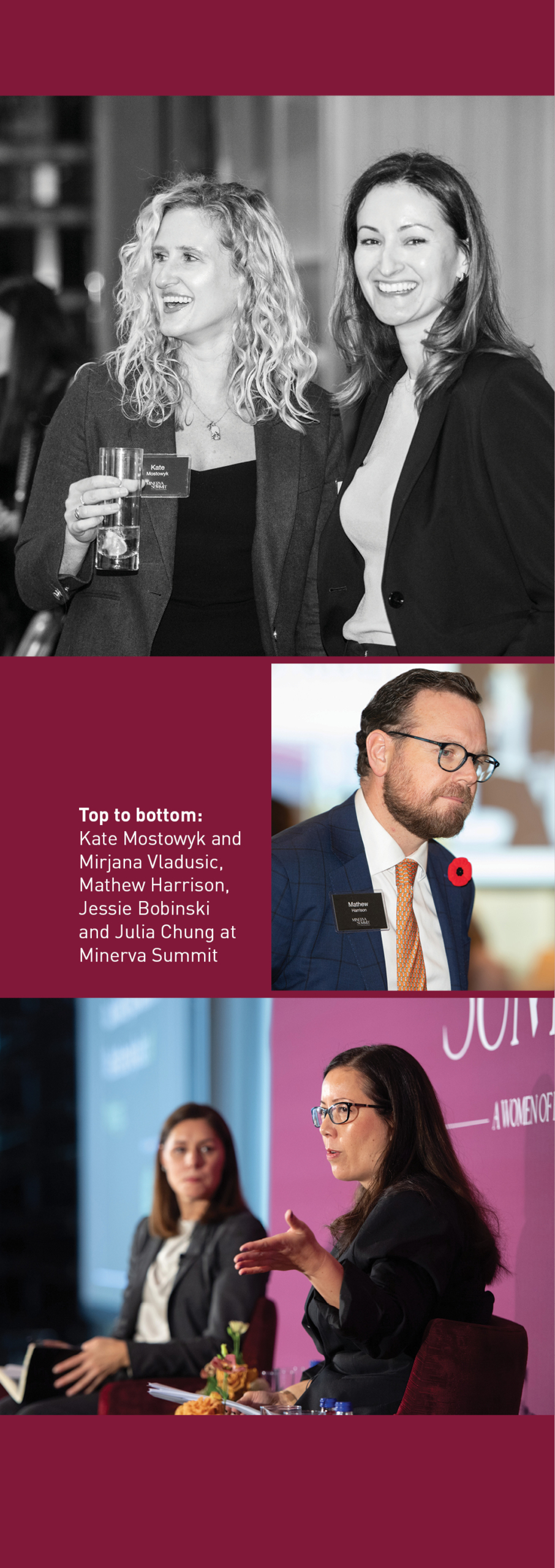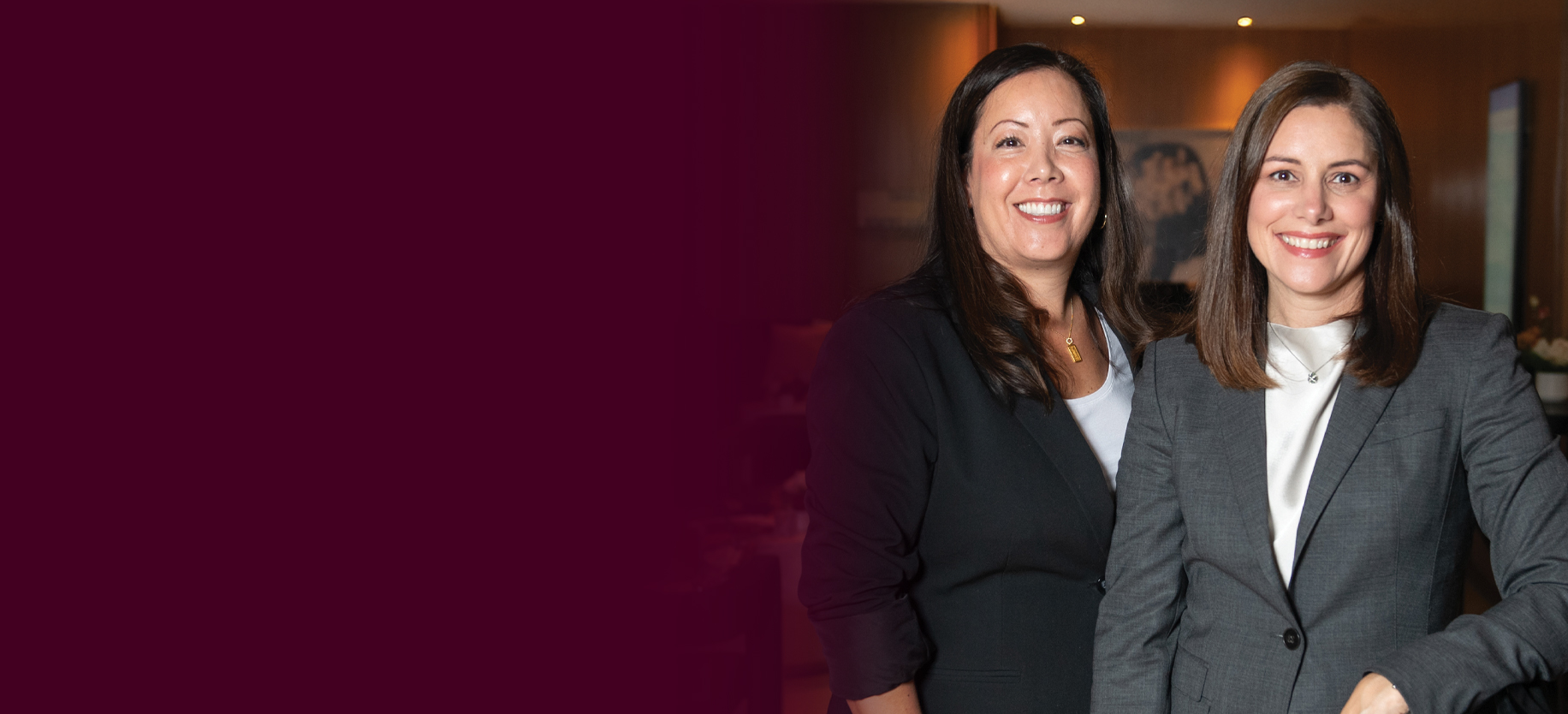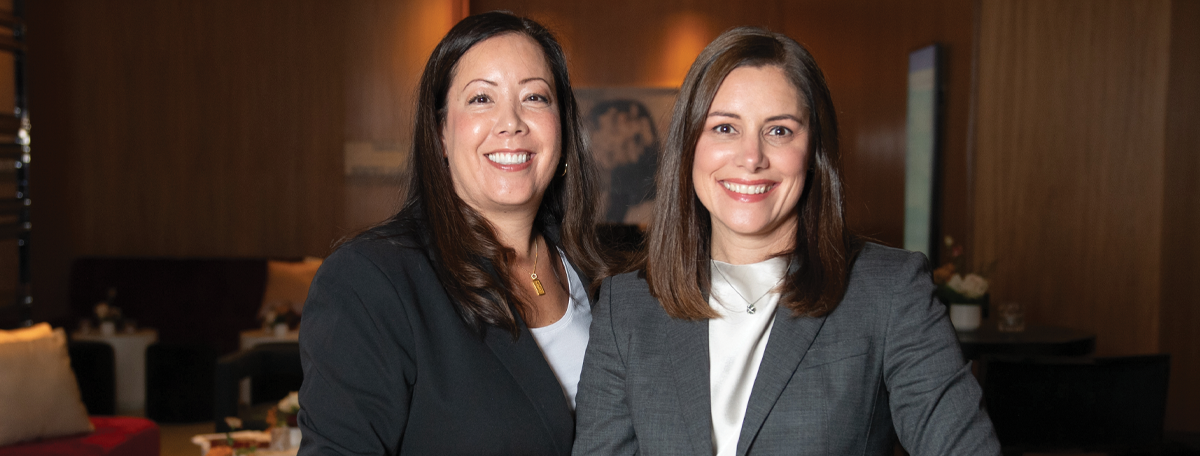Are you designing your best life—or just hoping things fall into place?
In this thoughtful conversation from Minerva’s most recent Summit, Julia Chung, financial expert and co-founder of Spring Planning, joins Burgundy’s Jessie Bobinski to explore the importance of proactive financial planning, especially later in life. From caregiving and generational wealth to tax strategies and unexpected challenges, they share insights to help balance a comfortable present with a secure tomorrow.
Jessie: We know the world around us is changing. Today, we have up to five generations that can be alive at the same time. But I’m wondering if you can expand on some of the financial issues that you’re most concerned with here as we go through our extending lifespans?
Julia Chung: I think some of it is partly just not recognizing that the change is happening. We’ve got this massive change around personal financial and savings structures. For instance, when we go back to the late 1970s, early ’80s, around 70 percent of working men generally had defined-benefit pension plans in Canada; 30 to 35 percent of working women had them. Now everybody’s sort of in the 30 percent to 35 percent range, meaning most of us are required to manage our own personal finances for the long term without the guarantees of employment pension plans. And we’re now looking at much, much longer lifespans to support. All of these things make the world very complex.
JB: Roughly 22 percent of working-age adults are aged 55 to 64, which is a record high. And the 65-plus age group is now growing six times faster than children aged zero to 14. Why is this important?
JC: Well, one of the things that we’re thinking about here is how a lot of our financial structures were built. And a fair number of them, especially when we’re looking at public services that support all of us in a variety of ways, were counting on having this larger group of working-age people paying taxes and supporting these systems, and this much smaller group of older people. And we’ve seen that flip the other way, where the younger working-age group is smaller than those who are nearing retirement age. The Canada Pension Plan and Old Age Security programs were built around expectations of retirement as early as age 60, with a normal retirement age expected to be 65 and then an expectation that a person would likely die by age 70. Everything was built for this old world, and we’re in this new place.
JB: While we are on this subject of the Canada Pension Plan and Old Age Security—how much, a ballpark figure, are we entitled to?
JC: Currently, the maximum Canada Pension Plan at age 65 is about $1,300 a month. The average person is getting between $700 and $800 a month. These payments, guaranteed for your lifetime, are impactful to your planning. Old Age Security is $727 a month if you start at age 65, and is clawed back based on your income. Canada Pension Plan payments can be split for tax purposes with your spouse. It also has a disability component and great survivor benefits.
JB: How do we even begin to start to plan for living longer and our futures when there is so much to plan for over the next handful of years?
JC: It’s really hard, because there are all these things we don’t know. I remember at the start of the pandemic, journalists would call me and they would say, “Okay, how are you doing this now that we don’t know what the future holds?” And I said, “We do it the same way we always did, because I never knew.”
But what we’re working with is different. And what we’re working with is more complex. We have so many different systems we’re working with, including medical and family dynamics. It’s very, very difficult. So, when we’re thinking about the complex systems that we live in, the first place we’ve got to go to is the big picture. What are we trying to achieve? And all of our systems, are they working together? Are they integrated?
When we’re under stress, and we’re feeling panicked and anxious about things we don’t know, we race towards action. Taking action feels better than slowing down, digging in, and saying, “I’m not taking action until I’ve created some plans.” We need to focus on the process, not the outcome, because we’ve never known what the future holds.
“When we’re under stress, and we’re feeling panicked and anxious about things we don’t know, we race towards action.”
The personal relationships piece is very important—all the people who support you, whether they’re in your family, whether it’s your investment counsellor, your accountant, your lawyer, those relationships are meaningful. This is no longer a transactional world. Those are the people that we’re going to rely on in our community as our systems change. And it’s so important that we find a way to remain open and curious.
JB: As investment professionals, we often have the clients we care for come to us with the hard numbers, and that’s where we tend to focus our efforts on in terms of planning. But we are also recognizing and integrating more and more of those tough, vulnerable conversations around, “What about you? What about what you want in life?”
JC: This is the deepest part of the conversations I have with most of my clients. A lot of people will come to me, and say, “I’m going to retire at age 65. I need X number of dollars per month. And I think I’m going to live exactly to the age of life expectancy, and I will have no problems between now and then. Could you just do the math?” And I can do the math, and it will be fundamentally wrong and not useful for you. The most important thing that we can start with is figuring out what’s important to you. So, I say to people, “What kind of life do you want to have? What’s going to be meaningful to you?”
What I want you to think about when you’re designing your best life is to start by identifying who are the people in your life? What kinds of things are you doing? What makes you have a good life? What is joy for you? When you’re having a good day, what does that look like? And I’m talking about the minutes of the hours of that day. What’s bringing you joy? What does that look like now? What might that look like in the future? And for a lot of people, it’s hard to think about all of this past next week, let alone five, 10 years from now. How about 40 years from now? It’s really important to try to create those visions at those different points. I ask people to get really specific, because this helps with your finances.
JB: How can I think about what the next 40 years look like? I can’t get past thinking past tomorrow half the time.
JC: If it’s too hard to come up with the vision, then I flip it the other way and say, “Okay, so what are you scared about? What are the things that are freaking you out right now? Who do you worry about the most?” For lots of women, we have this thing that I like to call “bag lady syndrome.” A lot of us, regardless of the amount of money and resources that might be available to us, are pretty confident that, someday, we will be financially insecure. We should probably talk about that. Generally, my experience with women is that they’re worried about everybody. So, who are we worried about specifically? And what sorts of things do we need to consider? And if you, or someone you love, experience incapacity, disability, or illness, who’s going to make the decisions? Who’s going to be there for you? Who are you going to be there for?
Remember, too, that your best life is iterative. Visions change with experience and time. For instance, you might say, “You know what? I always thought that I really liked camping. But I sure don’t—that stuff’s terrible.”
JB: After you bought all the gear.
JC: Yeah, you’re like, “Oh, my God, you mean I’m doing dishes in the woods? Why is this a good thing?” So, you find out what you don’t like by trying it out, and you find out what you do like by trying it out. And it’s okay to have a vision that changes, because the world is changing around you. You don’t have to be the one thing that’s stuck. Do away with perfection and just keep trying to pay attention, keep reflecting, like, “This felt good for three years, and now I hate it.” Or, “This felt great, it still feels great and I’m going to keep building on that.” Plan to do things. Plan to try things out.
JB: Where’s a great place to start when we are ready to get into the nuts and bolts of the numbers?
JC: I am lucky enough to work with lots of wonderful people who say, “Oh yeah, I’m fine financially now, what I really want to do is help my kids buy houses and send my grandchildren to post-secondary school. I want to give stuff away to people who I care about and causes that are meaningful to me.” I see this with lots of people, but I especially see this with women who tend to be very community-oriented. But before you do that, please, please take care of yourself first. I know that might seem counterintuitive to anything you’ve ever been taught in your life—you might think of yourself as someone who always helps and takes care of other people. But you cannot pour from an empty cup. You cannot help other people if you haven’t helped yourself first.
After that, remember that, when you’re younger, health-care costs are generally lower. I see a lot of people who are in their early 50s who might have some wonderful extended health-care plans. Then they get a few years older and maybe retire, and I say, “Hey, you had that extended health-care plan. Could you roll that over into an individual plan now that you’re retired?” And lots of people say, “Oh, but it costs so much more than just paying for it out of pocket would.” But in 10, 20, 30 years from now, your health care will be a lot more expensive, and nobody will want to cover you. You are the youngest and healthiest you are ever going to be right now. So, please, if you can get insurance for anything, get it.
JB: And that would include taking a look at critical illness, long-term, extended health care while you’re your youngest, healthiest self?
JC: Yes, even if it seems like it is not a good use of your money right now, the person you are when you’re much older will be happy you did so.
Another point: Often, when it comes to the specifics of financial planning, and we’re thinking about retirement income, there are a lot of people who have planned retirement income around a two-person household, because, in Canada, we can often split our income when we’re over 65 between two people. This is a wonderful tool. But the thing that most people forget is that not many spouses die at exactly the same time. For a lot of women, we are going to have a period of time that I like to call our “Golden Girls era,” and hopefully we will have as good a time as the ladies in the Golden Girls show. But that may mean we’re not sharing our tax return with someone. And if our entire retirement income plan is based on the idea that we will split income with someone, when that spouse dies—and I’ve seen this a lot—the surviving spouse, usually the woman, now has to take out much more money out of her portfolio to maintain their lifestyle because there’s only one tax return.
JB: And that too, just to digress a little bit, comes down to when and how much you take out of your RRIF, your RRSP and when you convert that over to drawing retirement income. Is it better to do so when you have somebody in the home you can income-split with versus leaving it to blossom and grow when you draw later in life and end up paying more tax as a single person?
JC: As we know, elder care is very expensive and harder and harder to come by. It is getting costly, it is really hard to plan for, and it is tough to think about. So, when we are taking care of ourselves first, we want to make sure that the potential cost of elder care—even if we’re not 100 percent sure—is something we’re planning around. It’s really important to tackle that, not only from a purely financial planning, “how much money do I need” perspective, but also to understand who is going to be there for you. Imagine it’s like Murphy’s Law—if you put a lot of time, energy, and money into it, maybe nothing will happen; maybe the worst thing that will happen is that you’ll die with a bunch of money.
“When we are taking care of ourselves first, we want to make sure that the potential cost of elder care—even if we’re not 100 percent sure—is something we’re planning around.”
 JB: A few guiding principles thus far: Start to plan early—the younger you are, obviously, you have the compounding of wealth over time, but the insurance factor comes into play. Take care of yourself first. Be mindful of tax implications when you’re doing your planning today. And, of course, remember that the process of creating your best life is iterative, and it will change over time. Now what about when you’re planning for others?
JB: A few guiding principles thus far: Start to plan early—the younger you are, obviously, you have the compounding of wealth over time, but the insurance factor comes into play. Take care of yourself first. Be mindful of tax implications when you’re doing your planning today. And, of course, remember that the process of creating your best life is iterative, and it will change over time. Now what about when you’re planning for others?
JC: It’s a good question. You’ll want to think about each group of people—and each individual—that you want to care for, and think about what that bare minimum looks like. So, you might say, “At bare minimum, I want to make sure that Johnny goes to college, or that Sally gets to travel around Europe, and we think it’s going to cost a certain amount.” Or, “I definitely want to make sure that I’m giving $10,000 to my community foundation.” After we’ve done the planning for you, we can start thinking about what you can reasonably afford in the balance of your plan.
But before we do that, there’s an important question we need to ask: “Do they even want that?” This is a problem that I see fairly often, which is, “I know my family. I know my people. It’s fine. Sally’s going to want the business and Johnny’s going to want the house.” And then somebody dies, or the gift is made, and everybody gets mad, the whole family blows up, and this is not what anybody imagined. And it’s not because someone is greedy, but because we didn’t ask people what they wanted and what was meaningful to them. I’m a big proponent of family meetings, which is a place where you can talk about fun things, like where you’re going to spend your holidays, and not-so-fun things, like, “Hey, guys, if I can’t think for myself, here are the things I want you to do.” It’s amazing how often people are surprised by all those conversations. If you build a forum into your family system where, at least once a year, there’s just a conversation about things that are important—no matter how big your family is, no matter how old your kids are— then you can create a system of communication that lasts for generations.
This post is presented for illustrative and discussion purposes only. It is not intended to provide investment advice and does not consider unique objectives, constraints or financial needs. Under no circumstances does this post suggest that you should time the market in any way or make investment decisions based on the content. Select securities may be used as examples to illustrate Burgundy’s investment philosophy. Burgundy funds or portfolios may or may not hold such securities for the whole demonstrated period. Investors are advised that their investments are not guaranteed, their values change frequently and past performance may not be repeated. This post is not intended as an offer to invest in any investment strategy presented by Burgundy. The information contained in this post is the opinion of Burgundy Asset Management and/or its employees as of the date of the post and is subject to change without notice. Please refer to the Legal section of this website for additional information.

